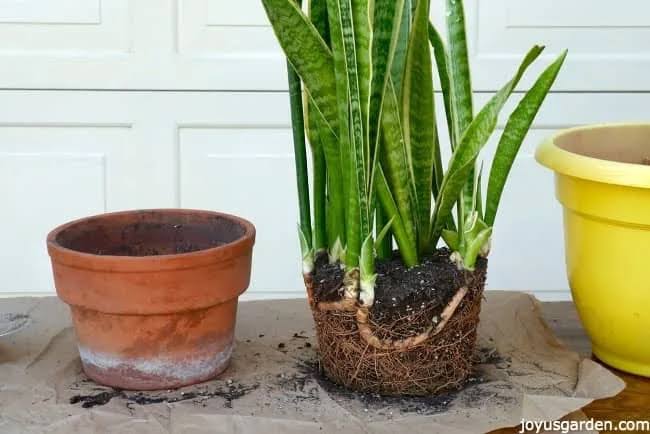If you’ve ever owned a snake plant (also known as Sansevieria or mother-in-law’s tongue), you already know why it’s one of the most popular houseplants in the United States, United Kingdom, and Canada. Snake plants are resilient, air-purifying, and stylish—thriving even in low light and needing minimal care. But like any other plant, they eventually outgrow their pots. That’s when the question arises: how do you repot a snake plant without damaging it?This is where our topic comes in: 🥘 Classic or creative: how to repot a snake plant works both ways! Whether you’re sticking to a traditional approach or experimenting with more inventive potting ideas, repotting doesn’t have to be intimidating. In fact, it’s a rewarding process that ensures your plant remains healthy, vibrant, and continues to be a showstopper in your home.In this article, we’ll explore step-by-step instructions, creative repotting hacks, and practical tips that will inspire you to give your snake plant the best possible refresh.Why Repotting a Snake Plant MattersRepotting isn’t just about aesthetics—it’s about your plant’s health. Over time, snake plants become root-bound, meaning the roots have no room to expand. This can stunt growth, reduce leaf vibrancy, and even cause the plant to tip over due to its top-heavy nature.When you repot your snake plant, you:Provide more room for root growthImprove soil aeration and drainageRefresh nutrients by replacing old, depleted soilReduce the risk of root rot and overcrowdingThat’s why the concept of 🥘 Classic or creative: how to repot a snake plant works both ways! is so important—it allows you to keep your plant thriving while also giving you space to get creative with style.H2: Classic Method – Step-by-Step Snake Plant RepottingIf you’re new to plant care, the classic method is straightforward and beginner-friendly.H3: What You’ll NeedA slightly larger pot (1–2 inches wider than the current one)Well-draining soil (a cactus or succulent mix works best)Gloves (optional, as the leaves can be sharp)A small trowel or spoonH3: The Classic Repotting ProcessChoose the Right TimeThe best time to repot is during the spring or early summer when the plant is actively growing.Remove the Plant CarefullyGently slide the snake plant out of its current pot. If it’s stuck, tap the sides or squeeze a flexible plastic pot to loosen the roots.Inspect and Trim the RootsShake off old soil and check the root system. Trim away any mushy or dead roots with clean scissors.Prepare the New PotAdd a layer of fresh, well-draining soil at the bottom of your new pot. Make sure the pot has drainage holes.Place and FillPosition the snake plant in the center, then fill around the roots with soil. Keep the base of the leaves just above the soil line to prevent rot.Settle the SoilGently press the soil down and water lightly to help the roots settle.This method keeps things simple and ensures your plant continues to flourish.H2: Creative Ways to Repot a Snake PlantIf you’re feeling adventurous, 🥘 Classic or creative: how to repot a snake plant works both ways! also applies to unique, fun methods that double as décor statements.H3: Use Unconventional ContainersBaskets with liners – Adds a rustic, cozy vibe.Ceramic bowls – Perfect for a minimalist look.Glass jars or terrariums – For a modern, sleek appearance (just ensure proper drainage).H3: Split and MultiplySnake plants naturally form clusters. During repotting, you can separate sections and create multiple plants. Place them in small, individual pots and spread them around your home—or gift them to friends.H3: Layer with Decorative PebblesInstead of plain soil on top, finish with white stones, colorful pebbles, or moss. This not only makes the plant visually stunning but also helps retain soil moisture.H3: Mix and MatchCombine your snake plant with other drought-tolerant plants like succulents. This creates a striking indoor mini-garden that’s easy to maintain.Practical Tips for Repotting SuccessDon’t OverpotChoose a pot just slightly larger than the previous one. A too-large pot holds excess water, which increases the risk of root rot.Soil is KeyAlways use a fast-draining mix. Snake plants don’t like “wet feet.” Mixing perlite or sand into regular soil helps.Watering After RepottingAfter repotting, water lightly and let the soil dry before the next watering. Overwatering at this stage can shock the plant.Acclimate to LightIf you moved your plant during repotting, keep it in indirect light for a week or two before returning it to brighter spots.FertilizingWait at least a month before fertilizing to avoid overwhelming the freshly repotted roots.Benefits of Repotting Snake Plants the Creative WayWhen you lean into creativity, the benefits go beyond just plant health:Stylish décor upgrade – Elevates any room instantly.Personal touch – Reflects your design style.Sustainability – Repurposing containers reduces waste.Joyful living – Fresh plants boost mood and purify air.That’s why 🥘 Classic or creative: how to repot a snake plant works both ways! resonates so well—it’s equal parts practical and inspiring.ConclusionSnake plants are low-maintenance wonders, but repotting them is an essential step in keeping them happy and healthy. Whether you choose the classic approach for simplicity or experiment with creative ideas for added flair, both methods ensure your plant thrives.The truth is, 🥘 Classic or creative: how to repot a snake plant works both ways! Whether you’re aiming for functional care or artistic expression, repotting gives you the chance to nurture your plant while refreshing your living space.So, next time you notice your snake plant’s roots peeking out or the pot tipping from weight, don’t hesitate. Grab your tools, choose your style, and give your plant the new home it deserves. You’ll not only promote healthy growth but also enjoy a décor boost that’s as refreshing as the plant itself.

